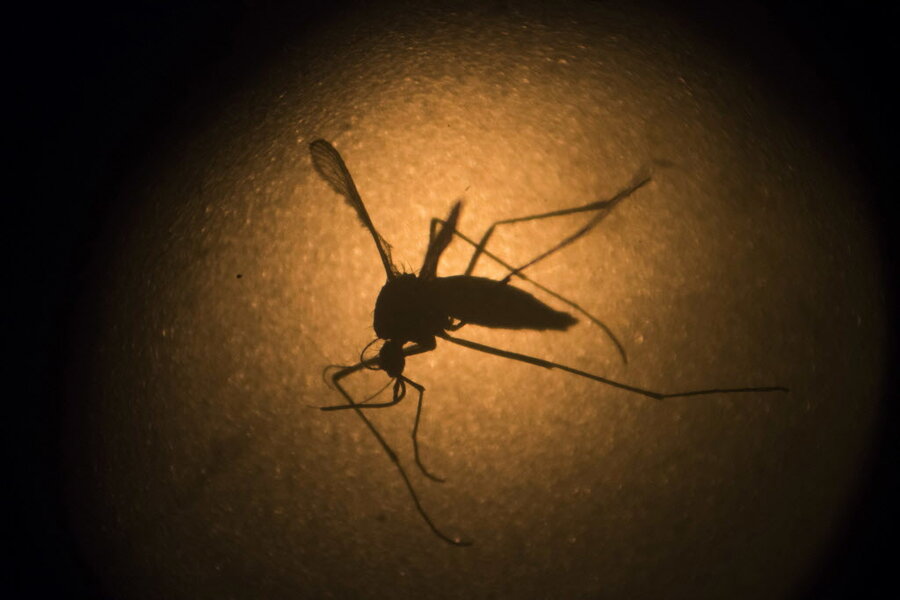Gene editing might help conserve species. But should it?
Loading...
At the World Conservation Congress, which meets in Honolulu this week, environmental leaders are considering an unusual solution to help endangered animals: planned extinction.
Gene drive, a controversial genetic editing technique through which scientists could alter or eliminate entire species, is mostly discussed alongside Zika and malaria fears. But recently, some conservationists have reframed the technique as a way to control invasive species. By slipping genetic disadvantages into the non-native population, they could theoretically protect endemic species.
Last week, the International Union for Conservation of Nature (IUCN) announced that it would not support gene drive research, pending more thorough assessment. But the debate continues, and it has revived several long-standing questions about the complex ethics of conservation. While some scientists see gene editing technologies as urgently needed tools to protect particular species, and overall environmental diversity, others argue that there are still too many unknowns, making genetic manipulation a risky gamble.
Still, some scientists’ sudden willingness to intervene in evolution signals a profound shift in thought: What was once an uncrossable line is now a boundary to be pushed. But why now?
"It may be that [gene editing tools] have so fundamentally transformed our ability to manipulate genomes that the question has quickly shifted from ‘Can we?’ to ‘Should we?’ to ‘If we do it, how can we minimize the risk of unintended consequences?’ ” Kate O’Connor-Giles, a professor of molecular genetics at the University of Wisconsin-Madison, tells The Christian Science Monitor in an email.
For most sexually reproducing organisms, each parent has a 50 percent chance of passing on a given trait to its offspring, biologists say. Some DNA fragments are passed on more frequently – these are called gene drives, and they’re perfectly natural.
Thanks to CRISPR and similar technologies, scientists can now cut and paste genetic material with remarkable accuracy. By inserting designer gene drives into an organism’s DNA, researchers can introduce self-perpetuating traits into the population.
Given the damage from invasive species and disease vectors, O'Connor-Giles says, it is a "moral imperative" to consider all options for controlling them. To this end, some conservationists have found gene drive technology attractive. In Hawaii, for example, an endangered bird called the honeycreeper is threatened by mosquitoes carrying avian malaria. Using gene drives, scientists could turn the mosquitoes’ immune systems against the disease-carrying parasite. Similar questions about mosquito modification are up for debate in Florida, as the state combats Zika.
On island nations such as New Zealand, invasive mouse and rat populations have wreaked havoc on local ecosystems. Some experts suggest that researchers could engineer rodents to only produce male offspring, effectively eliminating the population.
But there are considerable caveats to this technique, and as genetic modification approaches the mainstream, it has been met with potent opposition. All ecosystems are connected by a complex web of animal and plant relationships – a chain which can be easily interrupted. Experts say it’s extremely challenging, if not impossible, to accurately predict the effects of a single extinction on an ecosystem.
To engineer an extinction is to “wade into the unknown,” says Dr. O’Connor-Giles. And other experts, such as Michael Nelson, a professor of environmental ethics at Oregon State University, doubt that humanity can navigate the perils of planned extinction.
“I am not sure there is anything I see in our culture that would lead me to be confident that we can do this well or wisely,” Dr. Nelson, who also co-founded the Conservation Ethics Group, tells the Monitor in an email.
In an open letter to IUCN members, more than 30 prominent academics warned against the use of gene drives in conservation efforts. The letter, whose signers include anthropologist Jane Goodall, reads:
“[CRISPR] gives technicians the ability to intervene in evolution, to engineer the fate of an entire species, to dramatically modify ecosystems, and to unleash large-scale environmental changes, in ways never thought possible before. The assumption of such power is a moral and ethical threshold that must not be crossed without great restraint.”
For researchers in favor of using gene drives, however, the sudden shift to experiment may be less about changing values and more about changing worldviews. As the effects of climate change and urbanization pile up, the environmental condition of our planet may appear more dire. As a result, conservationists may turn to desperate solutions.
“One of the major problems presented to conservation – the gene drive debate being just one manifestation of it – is that these different values can’t all be fulfilled simultaneously, even if this was possible in the past,” Clare Palmer, a professor of philosophy and environmental ethics at Texas A&M University, tells the Monitor. “For instance, in the past, it was possible to set aside reserve land to preserve species, systems, and wildness at the same time. But now, because of climate change and invasive species, setting aside land does not necessarily protect native species or ecosystems.”
The debate also revives age-old questions about the ethics of conservation. Every rat, mosquito, and parasite plays a role in its ecosystem. So how do we decide what’s worth saving?
This week, the giant panda was taken off IUCN's Red List after decades of intensive conservation efforts. But the animal’s comeback may have had little to do with its value to its ecosystem, and everything to do with how cute it is. Some say this misplaced attention siphons time and funding from more worthy candidates.
“Such decisions are a blend of what we know empirically about the world and the values that we hold – though we do not always recognize this, and we are not always comfortable with it when we do recognize it,” Nelson says.
[Editor's Note: This article has been updated to clarify Kate O'Connor-Giles's statements.]








